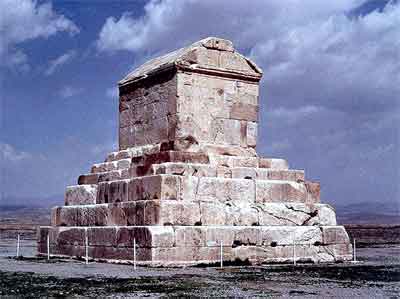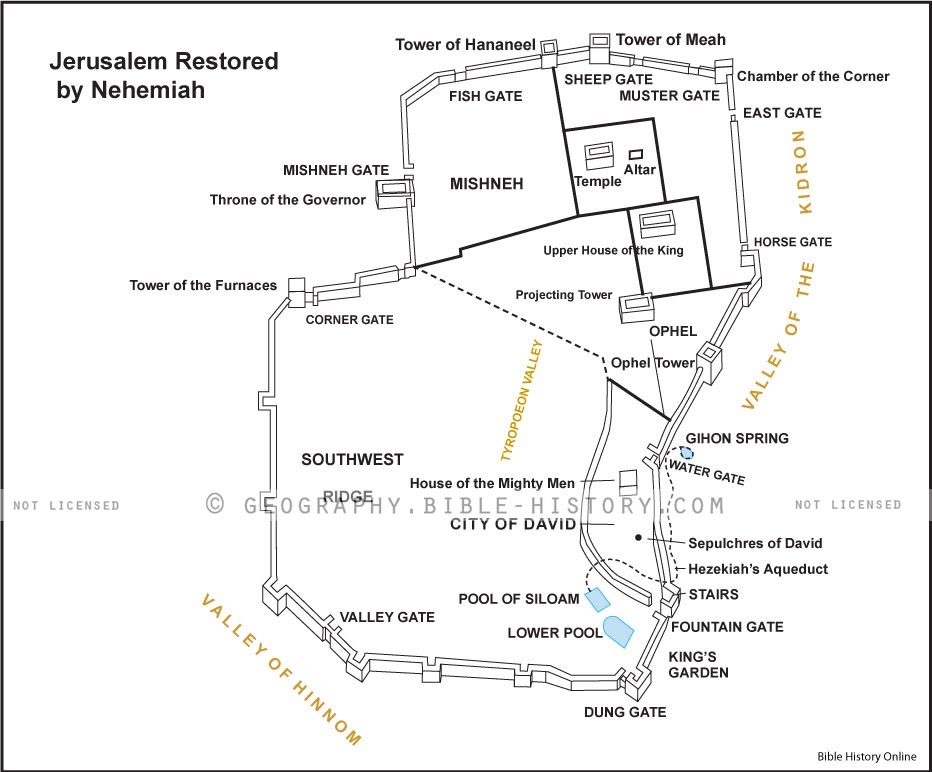Nehemiah 12 Background Information with Maps and Images (Picture Study Bible - Nehemiah) Free Bible Online
Nehemiah 12
Select a Chapter
-
Nehemiah 1 |
Nehemiah 2 |
Nehemiah 3 |
Nehemiah 4 |
Nehemiah 5 |
Nehemiah 6 |
Nehemiah 7 |
Nehemiah 8 |
Nehemiah 9 |
Nehemiah 10 |
Nehemiah 11 |
Nehemiah 12 |
Nehemiah 13 |
Select a Book of the Bible
-
Genesis |
Exodus |
Leviticus |
Numbers |
Deuteronomy |
Joshua |
Judges |
Ruth |
1 Samuel |
2 Samuel |
1 Kings |
2 Kings |
1 Chronicles |
2 Chronicles |
Ezra |
Nehemiah |
Esther |
Job |
Psalms |
Proverbs |
Ecclesiastes |
Song of Solomon |
Isaiah |
Jeremiah |
Lamentations |
Ezekiel |
Daniel |
Hosea |
Joel |
Amos |
Obadiah |
Jonah |
Micah |
Nahum |
Habakkuk |
Zephaniah |
Haggai |
Zechariah |
Malachi |
Matthew |
Mark |
Luke |
John |
Acts |
Romans |
1 Corinthians |
2 Corinthians |
Galatians |
Ephesians |
Philippians |
Colossians |
1 Thessalonians |
2 Thessalonians |
1 Timothy |
2 Timothy |
Titus |
Philemon |
Hebrews |
James |
1 Peter |
2 Peter |
1 John |
2 John |
3 John |
Jude |
Revelation |
The Book of Nehemiah
Nehemiah 1:7-9 - The words of Nehemiah the son of Hachaliah. And it came to pass in the month Chisleu, in the twentieth year, as I was in Shushan the palace, That Hanani, one of my brethren, came, he and [certain] men of Judah; and I asked them concerning the Jews that had escaped, which were left of the captivity, and concerning Jerusalem. And they said unto me, The remnant that are left of the captivity there in the province [are] in great affliction and reproach: the wall of Jerusalem also [is] broken down, and the gates thereof are burned with fire.
Nehemiah 13:1-3 - On that day they read in the book of Moses in the audience of the people; and therein was found written, that the Ammonite and the Moabite should not come into the congregation of God for ever; Because they met not the children of Israel with bread and with water, but hired Balaam against them, that he should curse them: howbeit our God turned the curse into a blessing. Now it came to pass, when they had heard the law, that they separated from Israel all the mixed multitude.
The Old Testament - A Brief Overview
Bible Survey - Nehemiah
Hebrew Name -
Nechemiyah
"Nehemiah"
Greek Name -
Neemias
(Greek form of the Hebrew)
Author - Nehemiah (Ezra and Nehemiah were treated as one book in Jewish Tradition)
Date - From 455-420 BC Approximately
Theme of Nehemiah - The rebuilding of Jerusalem
Types and Shadows - In Nehemiah Jesus is the one who led the captives out
Tomb of Cyrus the Great at Pasargadae

"O man, whoever you are and
wherever you come from, for I know that you will come--I
am Cyrus, son of Cambyses, who founded the Empire of the
Persians and was king of the East. Do not grudge me this
spot of earth which covers my body." - Cyrus
This tomb of the great Persian ruler, Cyrus, was discovered in 1951 at the ruins of Pasargadae (south-central Iran). Over 2500 years old, the tomb is in decent condition, made of white limestone and stands a total of 36 feet high. The tomb itself is 18 feet high resting on a 6 level base, also 18 feet high. It was built like a Ziggurat with Ionian and Lydian features. There is a small entrance and double doors leading to a room with no windows which once contained the "golden sarcophagus" of Cyrus, it is now an empty shell. Five huge stones make up its roof, which was slanted (gabled) to shed heavy rains. These Nordic gables were the architectural style of lands far to the north. The inscription was seen and recorded by Plutarch in AD 90.
Summary of The Book of Nehemiah
In Jewish tradition the books of Ezra and Nehemiah are regarded as one book, and it appears that they were originally two books because of the identical material in Ezra 2 and Nehemiah 7. Nehemiah made his journey to Jerusalem in about 445 BC, and he was not a priest or a scribe like Ezra was but he was a governor with authority given to him by the Persian king Artaxerxes to rebuild the walls and the city of Jerusalem for the Jewish people. He was originally cupbearer for the king of Persia (Nehemiah 2:1). Nehemiah completed the task in 52 days despite all the opposition from the foreigners who it settled in the land of Judah during the captivity.
The book of Nehemiah shows how God fulfilled his words written by the prophets concerning the return of the people of Israel from 70 years of captivity, and returned again to the land of their inheritance. In order to accomplish his divine will he change the hearts of the great kings of the ancient world, Cyrus Darius and Artaxerxes of Persia. He also worked through leaders like Joshua Zerubbabel Haggai Zechariah Ezra and Nehemiah in order to rebuild the wall of the city of Jerusalem and reestablish the law of Moses. The books of Ezra and Nehemiah reveal to us the history of the Jews between 536 BC and 430 BC. The book of Nehemiah covers the period from 445 BC for the next 12 years.
Quick Reference Map

Map of Jerusalem Restored by
Nehemiah (Click to Enlarge)
The contents of the two books may be analyzed as follows :
Outline of the Book of Nehemiah
1 ) Nehemiah's journey to Jerusalem, made possible by Artaxerxes, for the
purpose of re-building the wall (Nehemiah 1-2).
2 ) A list of the builders and the repairing of the gate (Nehemiah 3).
3 ) The rebuilding of the wall in spite of op-position led by Sanballat, Tobiah
and Geshem (Nehemiah 4:1-7:4).
4 ) The register of those who returned with Zerubbabel (Nehemiah 7).
5 ) The public reading and exposition of the book of the Law (Nehemiah 8).
6 ) The national repentance and the covenant of obedience (Nehemiah 9:1-10 :39).
7 ) Lists of inhabitants (Nehemiah 11:1-12:26).
8 ) Dedication of the wall and organization of the temple services (Nehemiah 12:27-47).
9 ) Nehemiah's reforms of abuses connected with tithes, the sabbath and mixed
marriages (Nehemiah 13).
In order to gain a complete picture of the history of this period, these two books should be examined also with the writings of the prophets Haggai, Zechariah and Malachi.
Quick Reference Maps - Nehemiah
Jerusalem Rebuilt by Nehemiah - The book of Nehemiah records in the third chapter a description of the course of the walls, beginning on the northeast side of Jerusalem and moving counterclockwise. His intention was not to be too exhaustive in the details.
Nehemiah Maps
Zerubbabel and Ezra's Journey to Restore Jerusalem - Zerubbabel, of the house of David heeded the decree of Cyrus to allow the Jews to return and restore Jerusalem and later more Jews including Ezra and Nehemiah returned to Jerusalem.
The Persian Empire in the 6th Century BC - The great rulers of the Persian Empire during the 6th century BC were Cyrus the Great, Cambyses, and Darius I the Great.
The Persian Empire in the 5th Century BC - During the 5th centuries BC the Persian Empire expanded under various rulers: Darius I, Xerxes I (Ahasuerus), and Artaxerxes I.
Nehemiah Resources
More About the Book of
Nehemiah
Nehemiah in the Picture
Study Bible
Timeline of the Ancient
World
Back to the Old Testament
Back to Bible
History Online
Bibliography Information
Free Bible Online - Picture Study Bible, King James Version. New York: American Bible Society: www.free-bible.com, 1995-2013. Bible History Picture Study Bible. Nov 05, 2024.
- King James Bible Home
- Free Bible Home Page
- Bible Encyclopedia (ISBE)
- Online Bible (KJV)
- Naves Topical Bible
- Smith's Bible Dictionary
- Easton's Bible Dictionary
- Fausset's Bible Dictionary
- Matthew Henry Bible Commentary
- Hitchcock's Bible Dictionary
Read The Bible
- 1599 Geneva Bible (GNV)
- 21st Century King James Version (KJ21)
- American Standard Version (ASV)
- Amplified Bible (AMP)
- Amplified Bible, Classic Edition (AMPC)
- Authorized (King James) Version (AKJV)
- BRG Bible (BRG)
- Christian Standard Bible (CSB)
- Common English Bible (CEB)
- Complete Jewish Bible (CJB)
- Contemporary English Version (CEV)
- Darby Translation (DARBY)
- Disciples’ Literal New Testament (DLNT)
- Douay-Rheims 1899 American Edition (DRA)
- Easy-to-Read Version (ERV)
- English Standard Version (ESV)
- English Standard Version Anglicised (ESVUK)
- Evangelical Heritage Version (EHV)
- Expanded Bible (EXB)
- GOD’S WORD Translation (GW)
- Good News Translation (GNT)
- Holman Christian Standard Bible (HCSB)
- International Children’s Bible (ICB)
- International Standard Version (ISV)
- J.B. Phillips New Testament (PHILLIPS)
- Jubilee Bible 2000 (JUB)
- King James Version (KJV)
- Lexham English Bible (LEB)
- Living Bible (TLB)
- Modern English Version (MEV)
- Mounce Reverse Interlinear New Testament (MOUNCE)
- Names of God Bible (NOG)
- New American Bible (Revised Edition) (NABRE)
- New American Standard Bible (NASB)
- New American Standard Bible 1995 (NASB1995)
- New Catholic Bible (NCB)
- New Century Version (NCV)
- New English Translation (NET)
- New International Reader's Version (NIRV)
- New International Version - UK (NIVUK)
- New International Version (NIV)
- New King James Version (NKJV)
- New Life Version (NLV)
- New Living Translation (NLT)
- New Matthew Bible (NMB)
- New Revised Standard Version (NRSV)
- New Revised Standard Version Catholic Edition (NRSVCE)
- New Revised Standard Version, Anglicised (NRSVA)
- New Revised Standard Version, Anglicised Catholic Edition (NRSVACE)
- New Testament for Everyone (NTE)
- Orthodox Jewish Bible (OJB)
- Revised Geneva Translation (RGT)
- Revised Standard Version (RSV)
- Revised Standard Version Catholic Edition (RSVCE)
- The Message (MSG)
- The Voice (VOICE)
- Tree of Life Version (TLV)
- World English Bible (WEB)
- Worldwide English (New Testament) (WE)
- Wycliffe Bible (WYC)
- Young's Literal Translation (YLT)
Table of Contents
Main Menu
- Ancient Assyrian Social Structure
- Ancient Babylonia
- Ancient Canaan During the Time of Joshua
- Ancient History Timeline
- Ancient Oil Lamps
- Antonia Fortress
- Archaeology of Ancient Assyria
- Assyria and Bible Prophecy
- Augustus Caesar
- Background Bible Study
- Bible
- Biblical Geography
- Fallen Empires - Archaeological Discoveries and the Bible
- First Century Jerusalem
- Glossary of Latin Words
- Herod Agrippa I
- Herod Antipas
- Herod the Great
- Herod's Temple
- High Priest's in New Testament Times
- Jewish Literature in New Testament Times
- Library collection
- Map of David's Kingdom
- Map of the Divided Kingdom - Israel and Judah
- Map of the Ministry of Jesus
- Matthew Henry Bible Commentary
- Messianic Prophecy
- Nero Caesar Emperor
- Online Bible Maps
- Paul's First Missionary Journey
- Paul's Second Missionary Journey
- Paul's Third Missionary Journey
- Pontius Pilate
- Questions About the Ancient World
- Tabernacle of Ancient Israel
- Tax Collectors in New Testament Times
- The Babylonian Captivity
- The Black Obelisk of Shalmaneser
- The Books of the New Testament
- The Court of the Gentiles
- The Court of the Women in the Temple
- The Destruction of Israel
- The Fall of Judah with Map
- The History Of Rome
- The Incredible Bible
- The Jewish Calendar in Ancient Hebrew History
- The Life of Jesus in Chronological Order
- The Life of Jesus in Harmony
- The Names of God
- The New Testament
- The Old Testament
- The Passion of the Christ
- The Pharisees
- The Sacred Year of Israel in New Testament Times
- The Samaritans
- The Scribes
Ancient Questions
- How did the ancient Greeks and Romans practice medicine and treat illnesses?
- What were the major contributions of ancient Babylon to mathematics and astronomy?
- How did the ancient Persians create and administer their vast empire?
- What were the cultural and artistic achievements of ancient India, particularly during the Gupta Empire?
- How did ancient civilizations like the Incas and Aztecs build their remarkable cities and structures?
- What were the major trade routes and trading practices of the ancient world?
- What was the role of slavery in ancient societies like Rome and Greece?
- How did the ancient Mayans develop their sophisticated calendar system?
- What were the key events and significance of the Battle of Thermopylae in ancient Greece?
- What was life like for women in ancient Rome?
Bible Study Questions
- The Authorized (King James) Version (AKJV): Historical Significance, Translation Methodology, and Lasting Impact
- Exploring the English Standard Version (ESV): Its Aspects, Comparisons, Impact on Biblical Studies, and Church Use
- A Detailed Historical Analysis of Language Updates in the KJ21: Comparison with Other Versions
- A Detailed Historical Analysis of the American Standard Version (ASV): Comparison to the King James Version, Influence on Later Translations, and Evaluation of Strengths and Weaknesses
- A Detailed Historical Analysis of Amplifications in the Amplified Bible (AMP) and Its Comparison to Other Bible Translations
- Detailed Historical Analysis of the Amplified Bible Classic Edition (AMPC): Examples of Amplifications and Comparative Analysis with Other Bible Translations
- Theological Implications of the BRG Bible's Color-Coding System: A Comparative Analysis
- The Christian Standard Bible (CSB): An In-Depth Analysis
- The Geneva Bible: Theological Distinctives, Impact on English Literature, and Role in Bible Translation History
- Exploring the Common English Bible (CEB): Translation Methodology, Church Use, and Comparative Analysis
About
Welcome to Free Bible: Unearthing the Past, Illuminating the Present! Step into a world where ancient history and biblical narratives intertwine, inviting you to explore the rich tapestry of human civilization.
Discover the captivating stories of forgotten empires, delve into the customs and cultures of our ancestors, and witness the remarkable findings unearthed by dedicated archaeologists.
Immerse yourself in a treasure trove of knowledge, where the past comes alive and illuminates our understanding of the present.
Join us on this extraordinary journey through time, where curiosity is rewarded and ancient mysteries await your exploration.
Recent posts
-

Creating a Cozy Living Room
Creating a Cozy Living Room: Interior Design Tips for Comfort and Style The living room serves as the heart of the home—a space where relaxation, en... -

Halloween Mystery Boxes – Professional Tattoo Machines & Accessories by Vlad Blad Irons
This Halloween, Vlad Blad Irons is adding excitement and surprises for tattoo artists with their exclusive Halloween Mystery Boxes! Available only unt... -

Sports, Cybersport, and Betting: A Blend of Ancient Traditions and Modern Thrills
Sports had been a great a part of human records, supplying amusement, competition, or even non secular importance across cultures. Today, the rise of ... -

How to Remove Watermarks from Photos Using DeWatermark.AI
In ultra-modern digital age, pictures play a critical role in private and professional projects. Whether it is for social media, content material crea... -

Ethical Employee Monitoring: Alternatives to Screen Capture for Better Productivity
Screen monitoring has become a crucial component of today’s work environments, especially with remote and hybrid models on the rise. Many companies ...
